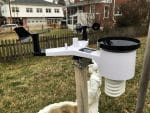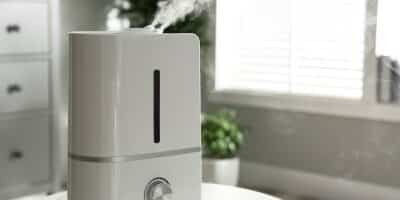
Knowing how much rain is falling in your backyard can be very useful for many homeowners. Perhaps you’re a gardener and need to measure the rainfall, so your plants get enough water to grow their best. Maybe there’s a creek running through your house and knowing the amount of rain that it takes to cause flash flooding might help you protect your property before the flooding starts.
Whatever the reason, this article explains what a rain gauge is, where and how you should place it, and the types of rain gauges available.
Our team of editors independently research, test, and recommend the best products to help you navigate when shopping online. This post contains compensated links, and if you make a purchase using the links included, we may earn a commission. To learn more, read our disclaimer.
What is a Rain Gauge
Rain gauges are weather instruments used to measure precipitation. While the name suggests that its sole function is to measure rainfall, some gauges will allow you to measure frozen precipitation like snow and sleet as well.
As we mentioned earlier, rain gauges are quite useful for outdoor enthusiasts, but any weather enthusiast should have one in their kit. They also play an important role for meteorologists, during severe weather events the measurements from your rain gauge can be sent to the National Weather Service, where they use the data to issue more accurate reports.
How to Read Your Rain Gauge
If you have a digital gauge, it’s just as simple as reading the measurement from the display, but for analog rain gauges, it’s a bit different. While we suggest you visit this page on the CoCoRaHS website where they have a detailed guide, we’ll summarize the instructions here as well.
On the side of your gauge, you will see markings that indicate the amount of rain within. As rain falls, it will fill up the tube. What you will notice is that the surface of the rainwater appears curved, this is called a meniscus, which is caused by the liquid coming in contact with the sides of the tube. Read the measurement closest to the lowest point at the base of that curved surface, and you’ll have your measurement.
For analog rain gauges that allow for measuring the water content in the snow, typically, you’ll need to remove the inner cylinder and let the snow accumulate in the larger container. Then you will need to melt the snow to obtain an accurate reading. Read our guide here for more information on how to measure snowfall.
Proper Placement of a Rain Gauge
Your measurements aren’t going to be worth anything if you don’t place your rain gauge in the correct location. To put it in the simplest terms, keep it out in the open and off the ground. However, there are some more specific considerations to keep in mind:
- The general rule of thumb is to keep the rain gauge twice the distance away from the height of the nearest obstruction (e.g., placing a gauge 20 feet away from 10-foot tall trees).
- Place the gauge at least 2-5 feet off the ground on the side of a pole, with the top of the cylinder several inches above the top of the pole to prevent splash back.
- Make sure the top of the rain gauge is level.
- Keep the gauge away from sources of artificial precipitation that can affect the readings, such as sprinklers.
Types of Rain Gauges for Your Home
To learn more about the different types of rain gauges available on the market and to find the best rain gauge for your home, keep reading below.
Analog Rain Gauges

Analog rain gauges are the cheapest and most straightforward of the options. They consist of either an acrylic or glass cylinder with measurements in inches and centimeters or millimeters.
Among analog gauges, we recommend the Stratus Precision Rain Gauge. While more expensive, this gauge is actually the recommended model for observers participating in the CoCoRaHS precipitation measurement network due to its top-tier accuracy.
Digital Rain Gauges

Digital rain gauges are more expensive than their analog counterparts but have the capability of being able to monitor rainfall without you having to read the gauge itself manually. In most cases, these gauges use what is called a “tipping bucket” mechanism. As rain falls, it drains from the funnel into these buckets. Each tip is tabulated (typically equal to a .01” per tip) and sent to the console.
While some digital rain gauges just measure precipitation, they aren’t as useful as a gauge that also measures temperature or other variables, like the La Crosse Technology 724-1710 Digital Rain Gauge with Thermometer. We recommend considering a digital rain gauge that can also measure temperature as well.
Home Weather Station Rain Gauges

Perhaps the best way to measure rain is through a personal weather station, which not only measures rainfall but also many other weather variables such as wind speed and direction, temperature, humidity, and barometric pressure. Take a look at our weather station reviews to see the top models on the market, or read our article on what is a weather station to learn more. Unlike most other types of rain gauges, a home weather station also allows you to monitor your readings over the internet thanks to built-in WiFi connectivity.
In the end, we recommend you consider this route instead of a digital rain gauge, as most personal weather stations are built to a higher level of quality compared to a digital rain gauge and they offer a lot more functionality.




